From Nanjing to Lhasa, a group of ecological idealists are cultivating what has become a transregional “corridor of life protection.” In 2001, when systematic conservation was first launched for Lhalu Wetland — the world’s highest-altitude wetland — few foresaw that this steadfast commitment on the plateau would one day lay the foundation for Lhasa’s designation as an “International Wetland City.” Two decades later, an initiative known as the “Cohabitat Visionaries · WildForce Initiative” has begun to reshape the ethical landscape of human–nature relations in a manner both gentle and resolute.
Jointly initiated in 2021 by Hongshan Forest Zoo in Nanjing and Tongji University in Shanghai, with subsequent participation from Nanjing Forestry University, the Shan Shui Conservation Center in Beijing, the Harvard Graduate School of Design and more, the program grew out of international youth practice camps. It focuses on optimizing the service systems of urban zoos and examining the impact of urbanization on local species habitats, carried out through field research as well as hybrid workshops both online and offline.
Over the past four years, “Cohabitat Visionaries” has extended its path from urban zoos to highland habitats, evolving from a time-bound campaign into a long-term action framework built on the collective strength of multiple stakeholders — the “Co-WildForce Initiative.” Today, its agenda continues to expand: ecological spatial restructuring, wildlife rescue, joint training of veterinary professionals, animal ethics and disability inclusion, as well as habitat restoration and regenerative agriculture, together weaving a vision of a cross-regional, cross-cultural, and cross-species “community of care for all life.”
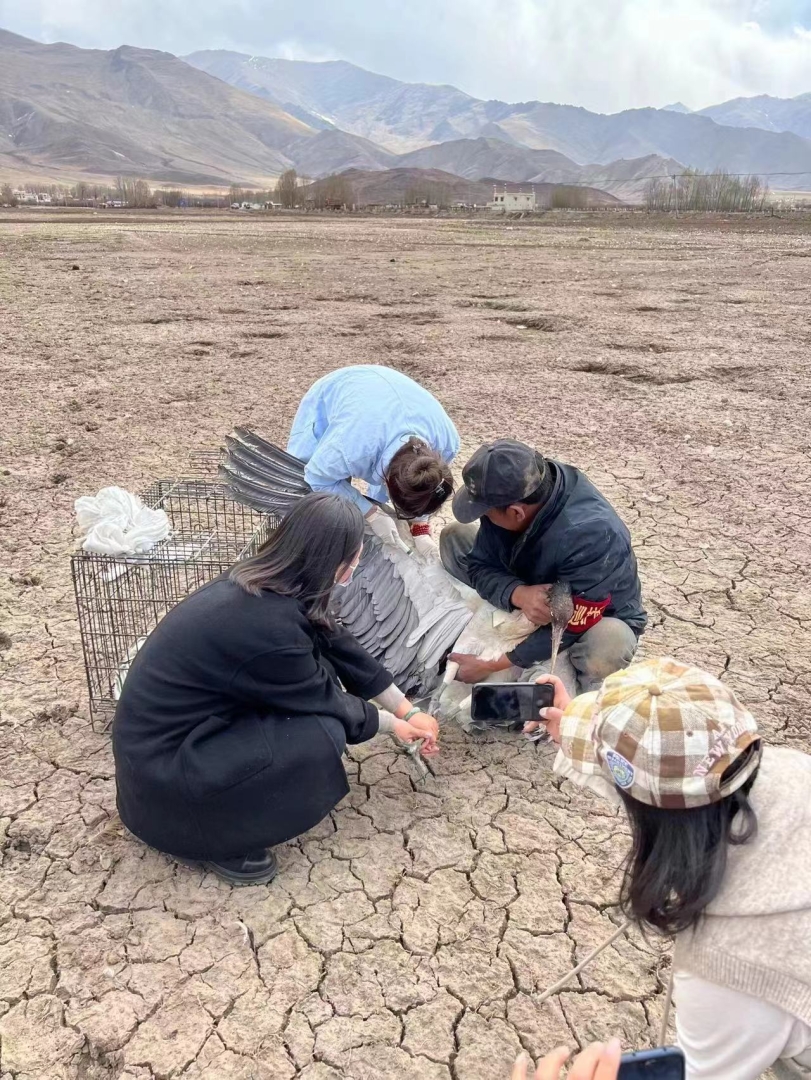
In Loma Town, Seni District, Nagqu City, veterinarian Zhaxi Deji and staff from the Forestry and Grassland Bureau examine an injured black-necked crane.
At Qushui County, where the Lhasa River meets the Yarlung Tsangpo, safeguarding life on the plateau is often a race against time. As the only non-profit institution in Tibet (Xizang Autonomous Region) with official authorization for wildlife rescue, the Tibet Wildlife Conservancy operates year-round without pause. From late-night pursuits of Himalayan black bears straying into villages to the emergency transfer of injured snow leopards deep within the snow-covered mountains, its work reflects both urgency and resilience.
In just the first half of 2025, the conservancysuccessfully rescued 44 nationally protected animals — including snow leopards, Pallas’s cats, black-necked cranes, and white-lipped deer. Since its establishment, it has cared for and rehabilitated a total of 597 animals, embodying a living archive of Tibet’s fragile yet enduring biodiversity.
Yet behind the mission lies a set of pressing challenges. The Conservancy Director Danzeng Tudan admitted that outdated facilities and a shortage of professional personnel remain the main bottlenecks constraining conservation effectiveness. The current conditions struggle to meet the growing demands of wildlife rescue, the expression of animals’ natural behaviors, and the public’s expectations for in-depth ecological education. The unique high-altitude environment and the realities of ongoing development make the joint establishment of the Plateau Wildlife Conservation Research Center by the Tibet Wildlife Conservancy, Nanjing Hongshan Forest Zoo, and Tongji University both timely and urgent.
In August, the conservancy became a gathering ground for explorers from afar. Among them were Tibetan and Han scholars from Tongji, Tsinghua, Fudan, Oxford, University College London, and SOAS, as well as veterinarians, keepers, cultural curators, and government practitioners working on the frontlines. They were not mere observers but active participants — bringing together the strength of “Co-WildForce Initiative” to seek an ideal home for plateau wildlife and a sustainable path for the shared future of humans and nature.
This was more than a sanctuary for herbivores roaming freely. It became a living laboratory where traditional Tibetan ecological wisdom met and merged with modern scientific approaches. Interdisciplinary teams spanning architecture, landscape, ecological economics, and social anthropology sought to distill from the rhythms and breath of the plateau a design language that truly “belongs to this land.”
Li Xiangning, Vice President of Tongji University, and Chief Curator of the Shanghai Urban Space Art Season, remarked: “The ‘Co-WildForce Initiative’ is dedicated to bringing design into ecological governance, inspiring young practitioners to explore, here on the plateau — where humans, animals, and nature interact so deeply — the fusion and renewal of ecological responsibility and the sense of a shared Chinese community.”
Tang Guanzhong, Secretary of the Qushui County Party Committee, recalled the transformation of 239,000 acres of barren hills into green forests through the North–South Mountain Greening Project. He emphasized that this commitment to greenery not only underpins Qushui’s honor as the only “National Civilized City (District)” in Xizang, but also extends the vision of care from cities and conservancies to broader habitats — the pristine lands that all forms of life must protect together.
Design by Nature’s Instinct, Create for Life’s Belonging
When human eyes, aided by technology, reach into the depths of the plateau, the snow leopard — the solitary traveler along the snow line — is no longer just a fleeting shadow. Xiao Lingyun, Associate Researcher at Xi’an Jiaotong–Liverpool University and a member of the Steering Committee of the International Snow Leopard Network, used infrared camera grids and satellite tracking collars across an 8,000-square-kilometer range to piece together the behavioral logic and ecological connections between snow leopards and their prey. She emphasized: “The starting point of all conservation must be a profound understanding of animals’ instincts, the essence of their habitats, and the transformations brought about by human activity.”
From this starting point, three design teams developed habitat blueprints that integrated animal behavior studies with regional ecological features and cultural contexts, presenting approaches that balance local wisdom with practical care.
Group A proposed a “dual-track strategy”: using microtopography and native vegetation to create flexible spaces where wild yaks could choose between visibility and concealment, while establishing salt-licking areas that not only supplement dietary needs but also extend the ancient custom of herders feeding yaks with tsampa and salt.
Group B designed a ring-shaped habitat, designed around the natural behaviors of the Tibetan wild ass. The layout weaves together foraging areas, resting spots, and an immersive educational zone. Native planting not only provides a self-sustaining food source but also enhances the visitor experience. Furthermore, the design elevates traditional pastoral observation techniques by integrating them into structured scientific monitoring.
Group C tackled the challenge of white-lipped deer rescue and rewilding with a “dynamic visual cohabitation” approach. Sunken ha-ha walls maintained visual connectivity between species, three layered viewing routes offered multidimensional perspectives, and vertical greening served as both food source and landscape — reducing human disturbance while enhancing animal welfare.
The teams ventured deep into pastoral areas, listening to the knowledge of herders, keepers, and veterinarians. They refined their designs according to seasonal snowstorms, migration routes, and behavioral feedback from captive animals. Habitat-making, they stressed, is never a one-way technical output, but a long cultivation rooted in care, collaboration, and cultural understanding. As one student wrote in a field journal: “We are not putting animals on display — we are restoring a complete highland micro-ecology, a world that needs to be listened to rather than defined.”
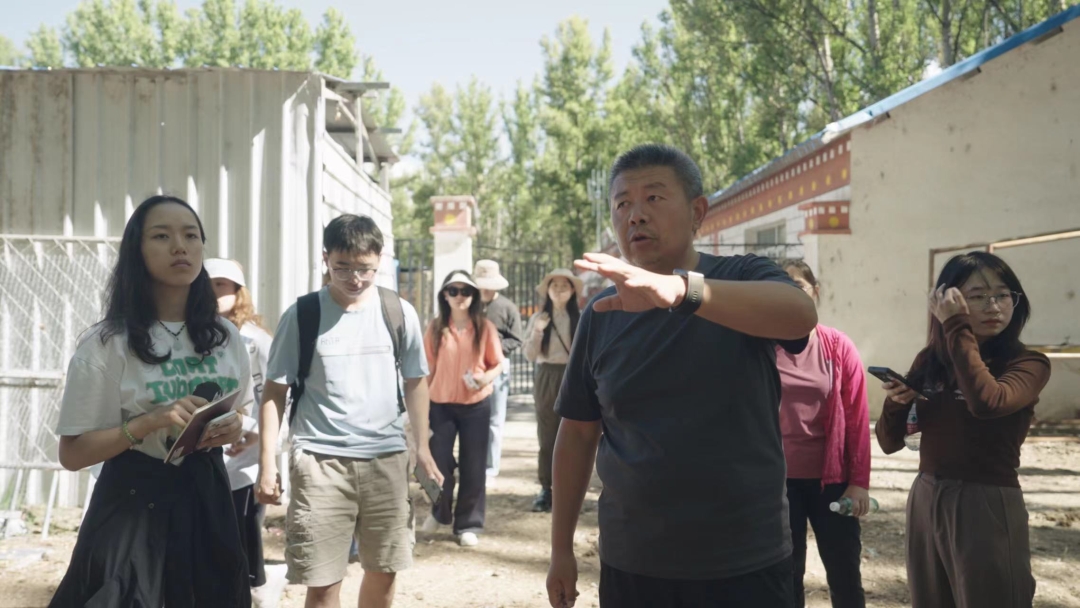
Associate Professor Dong Nannan of Tongji University observed: “In the unique natural environment of the plateau, design must scientifically address the behavioral and welfare needs of wildlife, while at the same time resonating with Tibetan localcultural — resisting the fate of becoming an alien imposition. What is encouraging is that these young participants confronted the complex ecological realities of the plateau and began to map out a knowledge framework for understanding symbiosis. This co-creation is far more meaningful than any single design drawing — it is not an instant building, but the more valuable planting of an awareness of ecological integrity. This is the deepest and most fundamental creative transformation design disciplines can contribute to the construction of China’s ecological civilization.”
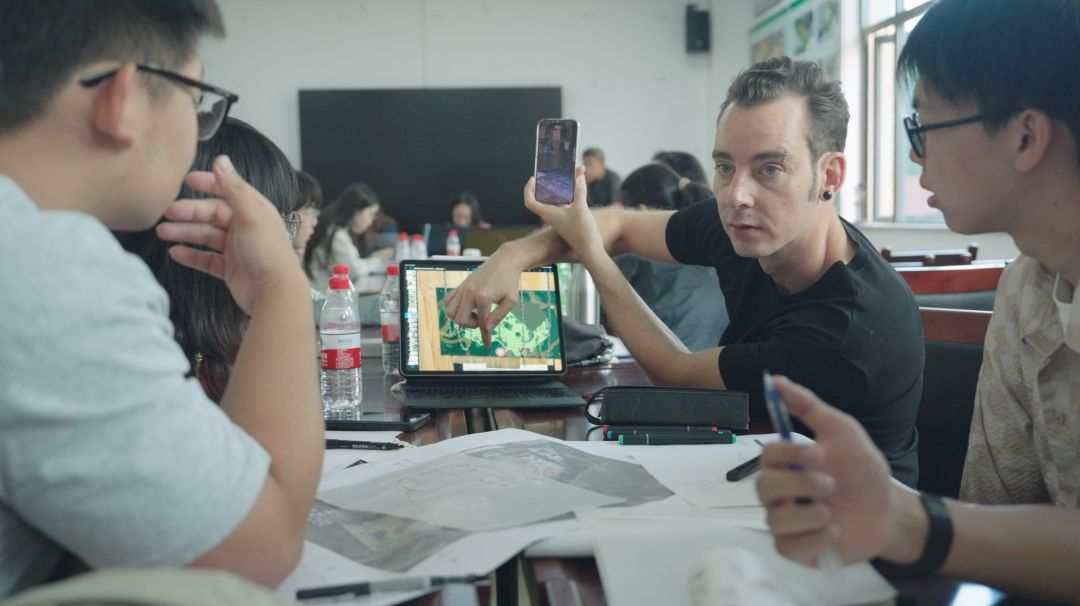
Martijn De Genus, Associate Professor at Tsinghua University, who once worked as a zookeeper at Apenheul Primate Park in the Netherlands, recalled his six years of daily companionship with gorillas — an experience that revealed to him the real emotional connections between forms of life, and planted in him the question of what “dwelling” truly means. Today, he extends that inquiry from primate societies to the built environments of humans, with particular attention to human–nature relations on the plateau. In his view, the Tibet Wildlife Conservancy not only connects local residents to nature but also serves as a vital interface for the world to observe and understand China’s wisdom of interethnic coexistence. “Only with reverence and respect for the uniqueness of a land,” he stressed, “can we find concrete pathways toward harmony between humans and nature. This is not just an ideal — it is a reality that can be translated through the language of design.”
During the field visit, an Asian elephant named Gaxê drew particular attention. At over forty years old, he lives alone in the Lhasa River Valley at 3,600 meters above sea level. In the elephant enclosure, Martijn De Genus joined keeper Sonam Dunzhu to discuss enrichment strategies: replacing hay with fresh branches, installing suspended foraging nets and scratching posts, all designed to encourage Gaxê’s active exploration and to ease the anxiety of enclosure.
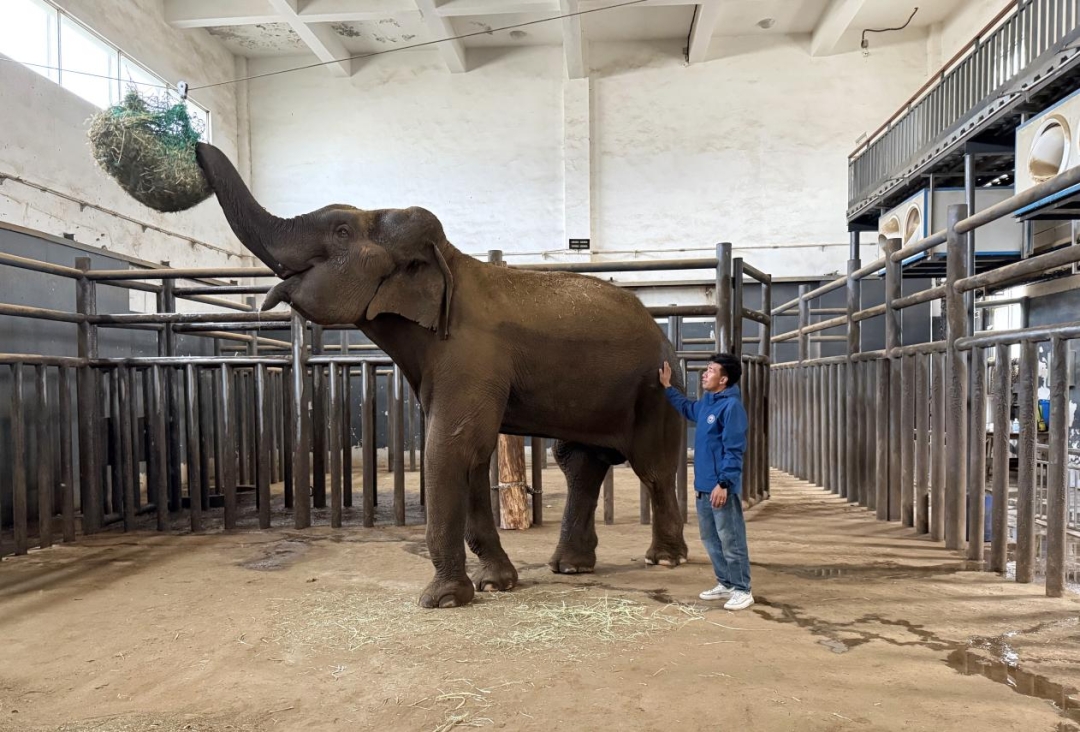
For more than a decade, Dunzhu has treated Gaxê like family—feeding him with care, sensing his moods, and rising at the faintest sound at night to check on him. “Gaxê is the only elephant in Xizang,” he explained. “In our culture, the elephant is a symbol of auspiciousness. But for me, he is also my livelihood—without him, I wouldn’t have this job or this income.” As the conversation deepened, participants learned that Gaxê had not been captured from the wild; rather, he was a former performing elephant who was rescued after years of training. For Dunzhu, their bond has long transcended the traditional keeper-animal relationship, evolving into a mutual companionship of interdependence. For Gaxê, a life of gentle care and dignity—rather than a distant jungle—may well be the truest form of home.
La Yong, an observer from the Elefam Institute for Animal and Nature Conservation, reflected in a youth dialogue: “Growing up in Lhasa, I was often asked what ‘animal welfare’ really means. My answer is: it is a form of embodied care in everyday life. Whether guarding newborn tiger cubs through the night, driving hundreds of kilometers to rescue an injured predator, or tending to the emotions of an elephant—veterinarians and keepers on the frontlines persist in respecting and nurturing life, despite limited resources, difficult circumstances, or uncertain futures. Humanity and nature are never simply a relationship of domination and submission. True conservation is not isolation, but coexistence; not charity, but reciprocity. It is found in the choices we make, day by day.”
Breaking Barriers for Coexistence — Forging Life’s Bonds with the Co-WildForce
The “Cohabitat Visionaries · WildForce Initiative” journey in Xizang was not only a cross-regional ecological practice, but also a profound “lesson in land ethics” for a new generation. Rather than offering predetermined conclusions, it encouraged participants to rediscover, through action, the very essence of design — that design is not merely an expression of form and space, but a medium for harmonizing relationships among living beings, a connective force that links habitat and city, culture and ecology.From isolated “islands” to integrated systems, from the physical restoration of spaces to the shared reconstruction of cultural and psychological landscapes, the meaning of conservation is thus elevated into a holistic care for life itself. Design returns to the living site; protection arises from empathy; and together they crystallize into the “Co-WildForce” — a power of coexistence that unites all beings, bridges regions, and nurtures a shared civilization.
In the view of Huang Pei,initiator of the program, executive director of theTibet Wildlife Conservancy and a practice-based scholar at University College London’s Institute for Global Prosperity, what lies between nature and cities, humans and animals, conservation and development are invisible cognitive walls. What she calls for is a reconstruction of spatial order and the narrative of life — a move beyond human-centered perspectives and geographic divisions, to weave anew acommunity of care for all life grounded in shared habitats, intertwined life trajectories, and uncertain yet hopeful futures.Here, snow leopards, blue sheep, herders, and even the earth beneath our feet, the wind in our ears, and the echoes of collective memory are no longer labeled as “others,” but become co-inhabitants in a shared narrative of perception and coexistence.
This vision is not an aesthetic rebranding of captivity under a more appealing name such as conservancy.Rather, it is a profound attempt to transcend geographical boundaries and conceptual divides — to redefine conservation not as isolated guardianship or one-way intervention, but as an active pathway of mutual nourishment between protection and development.What it ultimately responds to goes beyond the technical question of endangered species survival; it touches a deeper inquiry: on this land of multiethnic coexistence and multispecies habitation, how might we, with empathy and collective intelligence, build a more inclusive and resilient future for all forms of life?
“As I understand it, ‘Co-WildForce Initiative’ is more than protection and empathy—it signifies an active practice of ‘breaking down walls,’” she explained. “It is about building bridges of understanding and connection across divides — between social groups, cognitive frameworks, civilizational paradigms, and even diverse forms of life. Intergenerational experiences, rural and urban knowledge, Han and Tibetan cultures, and the perceptual wisdom of other living beings together constitute an irreplaceable and pluralistic system of knowledge.The initiative seeks to translate this reservoir of survival wisdom into nourishment for the continued growth of regional civilizations. Anchored in ecological and cultural values, it integrates participatory conservation education, community-benefit economies, and sustainable livelihood strategies into a dual framework of spatial planning and development ethics.”
Since its launch at Nanjing Hongshan Forest Zoo in 2021, the “Cohabitat Visionaries · WildForce Initiative” has been pioneering a transformative approach that extends from urban settings to the wild. As Deputy Director Bai Yali highlighted, “True conservation is a two-way commitment. It cannot rely solely on the isolated efforts of professional institutions; it thrives on broad social engagement and strong local collaboration. We must sow the seeds of conservation awareness in the city while also building sustainable platforms for interaction, guiding young people from understanding to action, and helping passionate participants grow into steadfast leaders. Looking ahead, Hongshan will support the talent development system of the Tibet Wildlife Conservancy, assisting in enhancing professional skills in animal welfare, rescue and care, and management. By creating immersive, hands-on ecological education experiences, we aim to inspire more people to engage with the plateau and contribute their voices and efforts to frontline conservation.”
From Nanjing to Lhasa, this is not the end of a journey but the beginning of a long-term collaborative platform. The “Co-WildForce Initiative” sets out from here, bringing together forces from policy, business, culture, academia, media, and local communities to jointly build an ecological restoration corridor and a talent-sharing mechanism that connect the city (Hongshan) to the plateau.As a key vehicle for practice, the Conservancy serves not only as a window for the public to encounter plateau wildlife and awaken empathy, but also as a hub for interdisciplinary collaboration and a frontier for exploring new economic collaboration models. Ultimately, it aspires to become a spiritual home where Han and Tibetan cultures meet and learn from one another.
The realization of this vision depends on building a civic platform for cultural and ecological practice — one capable of effectively bridging government and grassroots forces, integrating commercial logic with social value, and fostering multi-centered collaborative governance. Through this, a fundamental shift in perception can take place: environmental responsibility will no longer be viewed as the cost of development, but rather redefined as the infrastructure of urban systems, the new logic of business growth, and the living source of human dwelling wisdom.Investments that sustain ecosystem health and resilience, promote intercultural understanding, and nurture co-inhabitant, co-benefit community ties may appear to yield no immediate returns, yet in truth they are wise investments in the evolution toward a higher form of civilization. This marks not only the beginning of a new growth pathway, but also the very foundation of survival for future generations.
Though the ten-day camp was brief, the journey of life conservation is unending. In June 2025, the black-necked crane — hailed as the “spirit of the plateau wetlands” — was officially designated as the city bird of Lhasa. As the only crane species in the world adapted to high-altitude environments, around 4,000 black-necked cranes migrate each year from October to April, traveling thousands of kilometers to the Linzhou National Nature Reserve in Lhasa to overwinter.
“In Tibetan, we call the black-necked crane ‘Chongchong’ — like horsemen guarding the plateau, they have accompanied us for generations,” said Gesang Yangla, a mentor, her voice filled with affection. In her eyes, the black-necked crane is not only a sacred bird deeply embedded in Tibetan life and belief, but also an embodiment of courage and wisdom in the epic King Gesar.
As chief curator of the Chakhang Youth Arts Festival, Gesang manages the Chundui People’s Courtyard in Linzhou County — Tibet’s first rural public cultural space — located within the black-necked crane nature reserve, right beside the species’ main wintering ground at the Hutoushan Reservoir in Chundui Township.
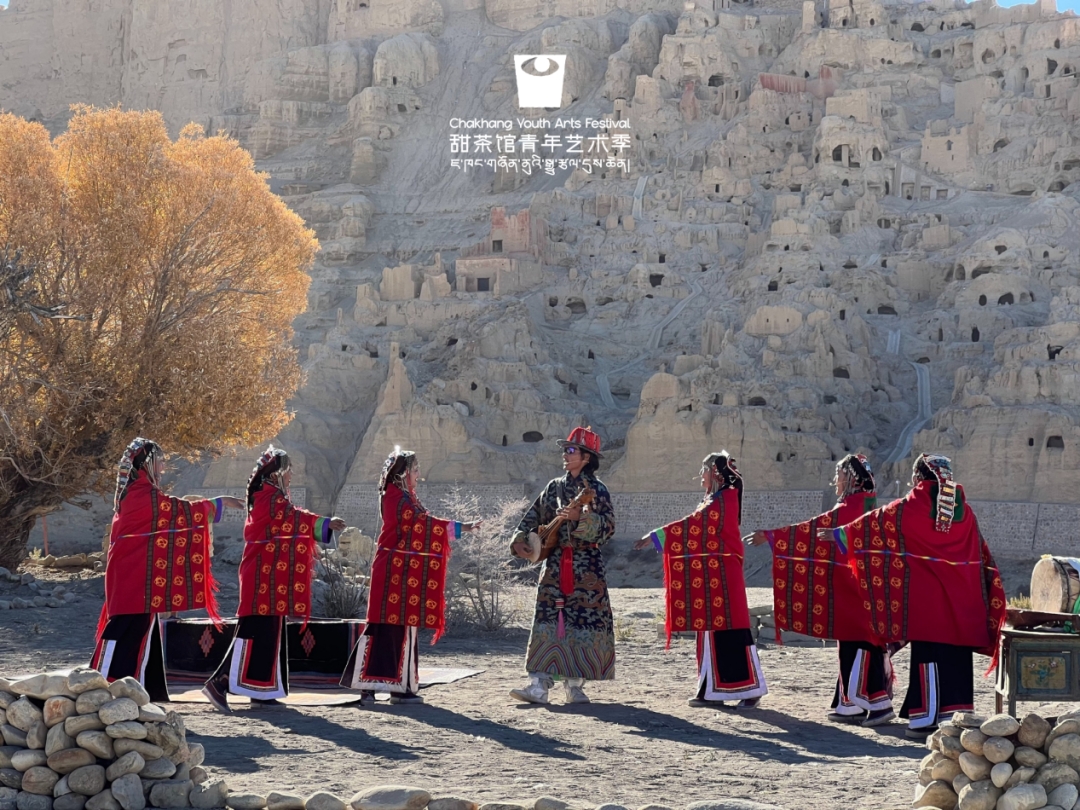
At the Chakhang Youth Arts Festival, a Tibetan musician performs the folk song “The Dance of My Heart” amid the ruins of the ancient Guge Palace in Ngari, accompanying himself on the guowo lute to express reverence for nature
“Looking ahead, we hope to collaborate with Nanjing Hongshan Forest Zoo and the Tibet Wildlife Conservancy, combining scientific research, ecological education, and cultural journeys to bring people closer to the black-necked cranes — to understand them, and to safeguard their home and vitality,” Gesang said.
The roots of development must grow deep within healthy ecological and social soil, where habitat conservation and urban growth intertwine into a web of coexistence capable of sustaining the enduring prosperity of all forms of life. Guided by this vision, the “Co-WildForce Initiative” adopts “co-inhabitation and co-benefit” as its guiding principle—ensuring that every act of conservation is accompanied by cultural warmth and the agency of local ecological wisdom. It upholds the black-necked crane’s dignity and collective memory as a cultural totem of the plateau, embodying a living covenant in which culture nourishes conservation, and conservation, in turn, nurtures culture.
Media Contact
Company Name: Tibet Wildlife Conservancy
Contact Person: Huang Pei
Email: Send Email
Country: China
Website: http://www.inewsweek.cn/observe/2025-10-11/27080.shtml





